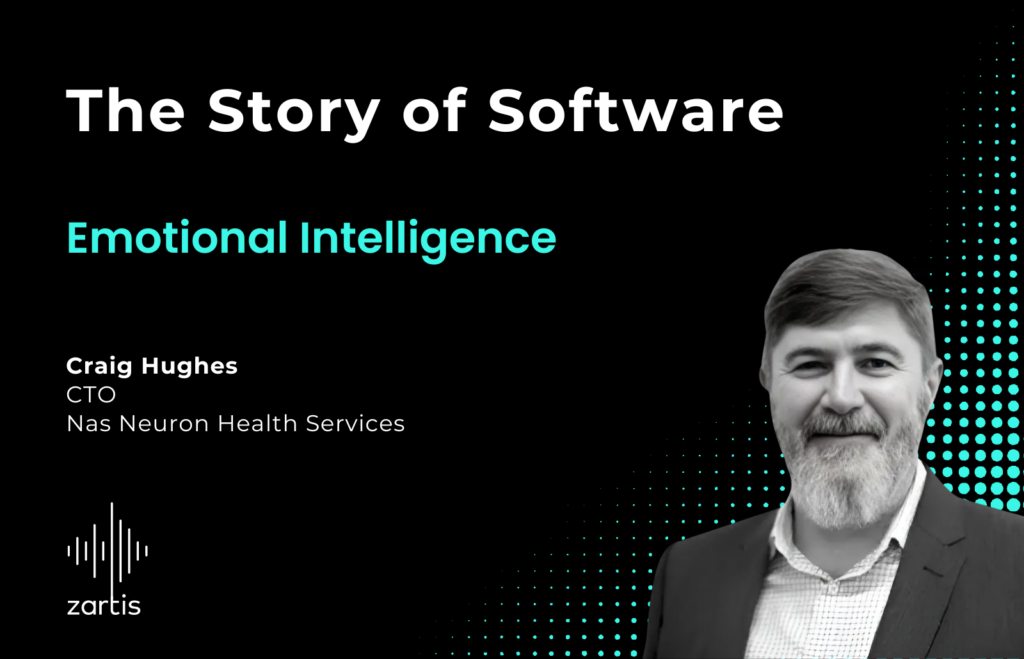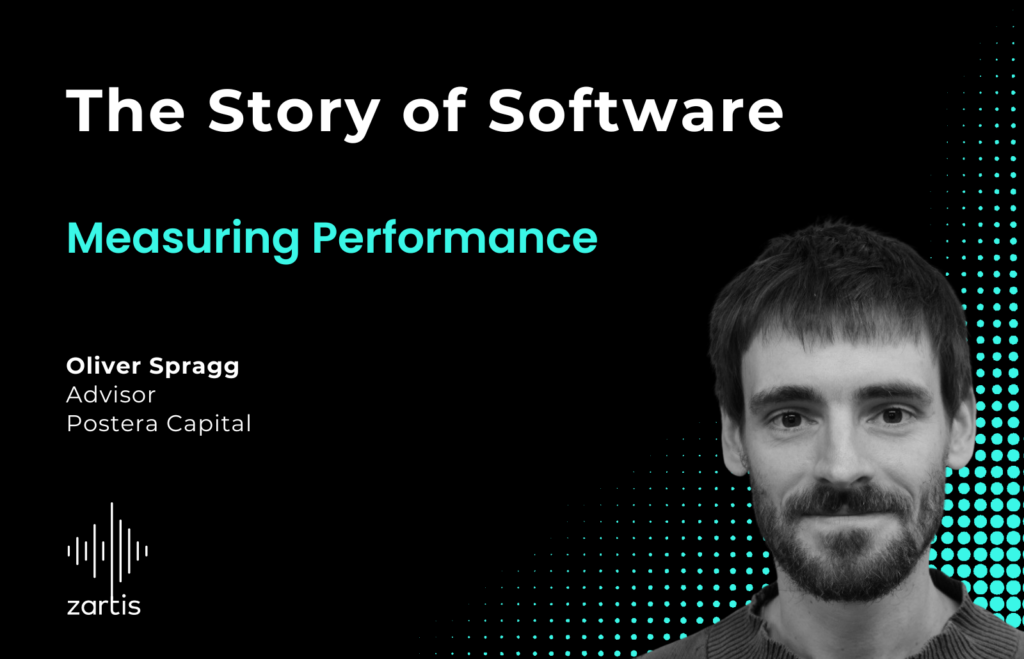Padraig Coffey, CEO at Zartis and podcast host, is joined by Levi Malott, VP of Engineering at Pachama, to discuss the opportunity for technology to measure the carbon capture of forests and guide decision-making.
On the Carbon Sequestration of Trees and Forests
The Guest – Levi Malott, VP of Engineering at Pachama
Levi Malott is an engineer and engineering leader with over a decade of experience in the software world. He has worked in some incredibly impactful companies, including SpaceX, BetterUp and now Pachama. Levi is currently VP of Engineering at Pachama, a company that uses AI and remote sensing to verify and monitor carbon capture by forests to help finance conservation and reforestation.
Technology-enabled Carbon Capture Measurement
Tree planting and forest projects have become an essential carbon offsetting tool at both a small and large scale. For these initiatives to have a real impact, it’s essential to understand them better and invest accordingly. Technology can help during the many stages of that process. Levi shares his deep expertise as he introduces us to this topic.
Some of the sub-topics covered in this podcast episode include:
- The lifetime of a tree (and a forest) and how its carbon absorption capabilities evolve.
- The three types of forest projects – reforestation, conservation and improved forest management.
- The challenges and opportunities of measuring the carbon capture of forests.
- Assessing risk – forest fires.
- The next steps in this space at the intersection of technology and forestry.
Episode Highlight
Episode Transcript (abridged version):
[…]
Levi, could you tell us a little about what Pachama does and the backstory of how the company came about?
Yeah, sure. We are building a verified marketplace for carbon offsets. We fundamentally believe that nature is going to be a very important part of fighting climate change. So, our whole purpose is centered around the question of how we can restore nature to fight climate change. The way we do that now is through a verified marketplace where people can come to our website to purchase verified carbon offsets. Our role there is not just being a marketplace, but also an additional layer of verification. We’re building technology with remote sensing, and making use of satellite images, Lidar technology, radars together with different remote sensing techniques, and machine learning to essentially have accountability over projects. We can measure how much carbon is stored in forest projects and compare that with how many carbon credits are issued.
Pachama was founded back in 2008. The founders, Diego and Tomas are both from Argentina. Diego went on a trip with his brothers to Peru, and they went into the Amazon and just saw the level of deforestation that was happening. From that trip he came back really dedicated to doing something to preserve mother earth. Eventually, he met Tomas, who has a really strong background in machine learning and was thinking about some ways to apply that technology and the level of geospatial data access we have now to doing something to benefit nature and our climate. So from their meeting, Pachama was born. The company then went through Y Combinator, came out with a seed round and here we are.
[…]
Could you tell us about the lifetime of a tree or a forest and how carbon absorption capabilities evolve?
Yeah, so with respect to carbon markets, there are three different types of forest projects – there is reforestation, conservation, and then improved forest management. So we’ll start at reforestation because it kind of covers the entire life cycle of a tree, and then we can cover some of the other ones as well.
At the start you have a seed, and then you have saplings grown in nurseries. The first step is to get saplings growing in a nursery environment, so that you can kind of monitor and make sure that you have enough plants. Then there’ll be a planting season – in Brazil, it’s November for a project that we’re working on right now. So coming up, they will move from nurseries, and there will actually be people taking those saplings and putting them into the ground. After that, they mature into young trees. The growth of the tree from sapling to tree is pretty slow. So typically, you don’t see that really accelerated growth of trees until you’re 5+ years through to 30. That’s where you see a lot of the accelerated growth in trees, and at some point, it’ll taper off, and they’ll kind of hit their adult maximum height. So, old forests are classified as 140 years plus. Through that, if you think about it, the younger trees have really high carbon sequestration rates, and that tapers off over time as the trees grow. Those older trees are the ones that have most of the carbon stored.
I think every reforestation project eventually becomes a conservation effort at some point, because we want to protect the carbon that’s stored in these trees to prevent that from coming back out into the atmosphere as emissions. Among each one of those stages, you essentially have a failure rate – not all seeds are going to get converted into saplings, not all the saplings planted are going to live, especially if you’re looking at non-native tree species being planted somewhere. Then through each of the various stages, there’s a harvesting rate. There could be a natural disaster that comes through and wipes out part of the forest or there could be elicited deforestation. Not all of your seeds end up in old growth forests, and part of that is healthy. Forests will go through a stage in their life cycle where they get through a natural thinning process, wherein some of the trees just don’t make it to the crown to get sufficient sunlight and they die off. But they eventually decompose, and that essentially becomes biomass, a fertilizer for the trees. So part of it is natural.
Levi, you were mentioning that really, the main growth phases of trees can be around years 5 to 30 and thereafter, things can taper off a little bit. What if you harvest those trees, let’s say for wood as a sustainable building material for example, does all the carbon that’s been captured and stored start to seep out again?
Not all of it, but some certainly will. It depends on what the end product is. So for example, if that wood is going into building materials like two by fours, or furniture that still exists as a stable wood product, then that carbon still stays in it as long as that furniture stands. However, certainly there’s going to be parts of trees that are not milled into furniture and whatever is not stored into the end product would end up back as emissions. Paper products like toilet paper, cardboard etc., those typically end up straight as emissions just because they’re short term products.
I guess one of the big challenges now is to accurately measure how much carbon is being captured by these types of forestry initiatives. Would you be able to speak about the steps that Pachama or others have taken in this regard, and maybe some of the challenges around doing carbon capture measurement?
Yeah, I love this topic, because this is really the bread and butter of what we’re trying to do on the technology side. I’ll start with the current state of how biomass in a forest is measured right now. So, how much carbon is stored in the forests is what we care about in terms of carbon markets and carbon offsets. So traditionally, when starting a forest project, there’s going to be a verification process, with surveyors going out and taking measurements of the diameter of the tree and the height of the tree. Then they feed those measurements into allometric equations, and then essentially get an estimate of the biomass. But, nothing about this approach is scalable. Say you wanted to measure every tree, you know, if you have forests of sufficient size, that’s going to take a long time, or a lot of people to actually go do that.
So typically, there is verification of the sampling, and then you extrapolate out carbon stored in that project and that number is used to issue carbon offsets. Then that project holder can sell those assets to businesses to be used as part of their sustainability strategies. Because of these lengthy processes, verification events usually take place years apart – just because it requires a human effort to do that, especially for conservation projects. Conservation projects are typically much bigger than a reforestation project, because it’s procuring land and then kind of protecting it from deforestation, so the areas are typically larger.
The objective we have is to quantify biomass faster, more accurately, and more frequently than humans can. So, that implies a level of accuracy, scale and frequency that we can’t achieve otherwise. The cool thing about that is that you kind of have a heartbeat of the carbon storage of a forest over time. If you can take frequent measurements, then you can start plotting that out and seeing its evolution over time and start answering some of those questions like; we did this project and did something different on the saplings and we can maybe see a difference in biomass over that project versus another one. Essentially, what we’re building is using this remote sensing data and machine learning on top of it to build a biomass instrument. I believe it to be a scientific instrument with relative precision, tolerance, and saturation.
Some of the challenges are, you know, you still need a level of supervised machine learning. You’re providing labels like, hey, this plot of land has this much carbon stored. What machine learning is doing is trying to identify the evolution over time from that input data to determine what those environmental measurements are.
You need multiple data sources. Images alone, you can get kind of colors and shapes out of images but you don’t get a lot of information like tree height, or those kind of volumetric properties around trees that are important for understanding how much carbon is actually stored in the trees. So we also utilize Lidar, which is using a light sensor, essentially, to get the representation of anything that we search for trees. Radar can penetrate a little bit more of the canopies. However, the challenge is that all those data sources need to overlap in time and space. If you have an image from 2014, and then your measurement is from 2018, well, from 2014 maybe there’s some trees that were cut down. It’s going to be hard to align those things, if there were changes in the landscape over time.
Another one is, we need to understand the uncertainty of the measurements being made. So what’s our confidence in terms of a plus or minus in any measurement coming out of our biomass instrument. This is so we could say, within this project, or within this region, there’s this much biomass stored like plus or minus 5% of 10 tons per hectare with a 95% confidence. Without that, it’s hard to understand if the measurements you’re making are even valid with the region. So, some of the early approaches of models that we built were regionally specific.
There are kind of obvious challenges, like data storage challenges, but the process itself comes with challenges – we’re building quite sophisticated infrastructure to ingest, categorize, access, and process that amount of data and we want to do these things frequently. Again, trees grow slow, but they disappear quite quickly. To use an electrical analogy it is like batteries versus capacitors. Batteries take a long time to charge but they power say your iPhone for quite a while. Capacitors are almost the same, but they can discharge almost instantly. So if you think about your Kodak taking a picture and making the bright flash, that’s a capacitor spending all its energy. Trees are kind of similar in that sense, you know, if you cut it down, or fire comes through that CO2 is released quite quickly. Therefore, frequency really matters. And there is an interesting challenge within that, too, because things like clouds become a problem. If you’re looking at images taking measurements on a weekly basis, getting images without clouds in them is something you can’t control, but you have to account for it. So things like, how often can you get cloud free images determine when you take measurements. On the other hand, things like radar can penetrate clouds, so you still get some information. It’s like the combination of all these data sources to provide a more robust, accurate picture of what’s going on. The goal is to confidently do this, and estimate biomass on a frequent basis cheaper than people could do it. Then you have this system, and you can deploy actions based on that, you can generate alerts for wildfires or things like, hey, there’s some unobserved deforestation going on.
[…]
You can find The Story of Software podcast on:
Apple Podcasts, Spotify, Stitcher, Deezer, & any other podcast platform of your choice.
We hope you enjoy listening to this tech podcast and feel free to share any feedback with us: podcast@zartis.com







